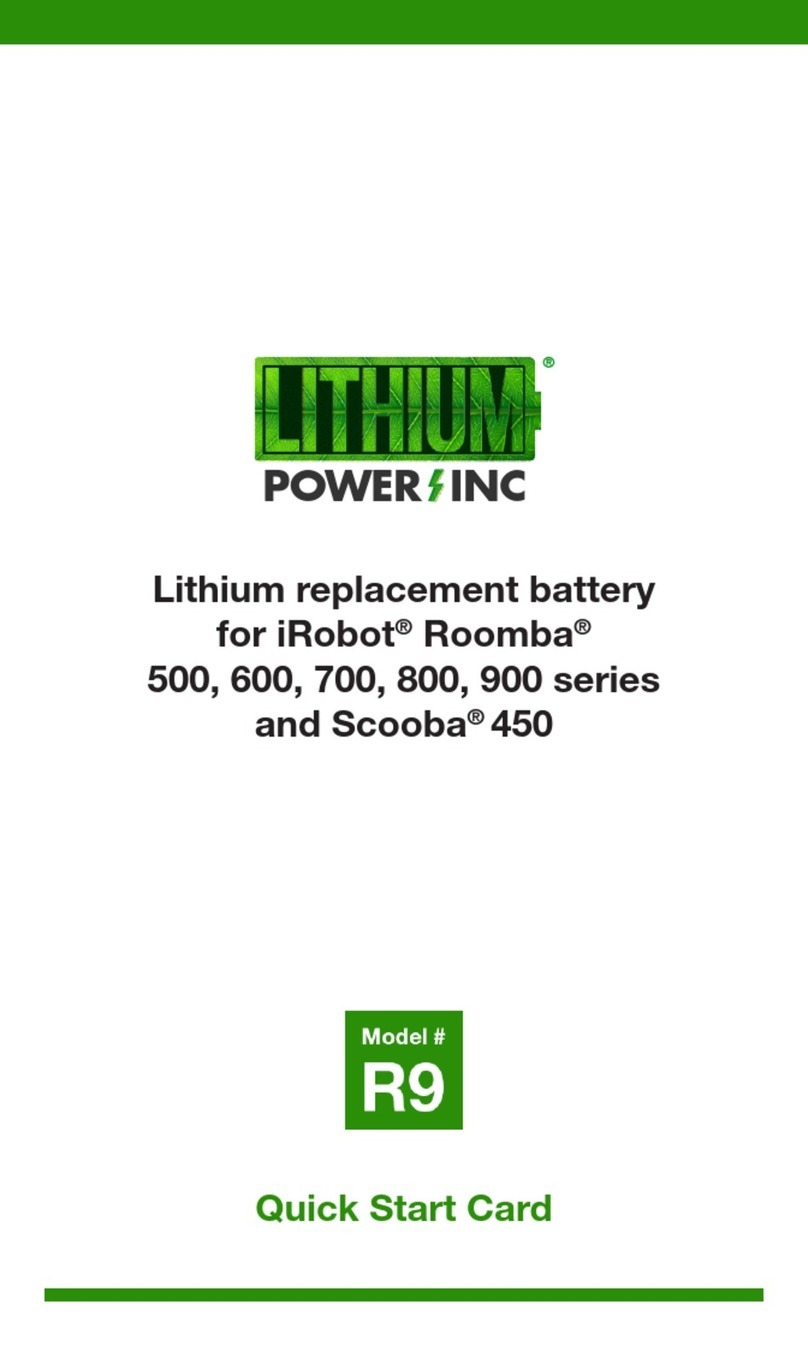
4 /13
WARNING: Explosion, Electrocution, Or Fire Hazard
A battery can present a risk of electric shock, burns from high short circuit current, fire,
or explosion.
Observe proper precautions.
Ensure the cables are properly sized.
Ensure clearance requirements are strictly enforced around the batteries.
Ensure the area around the batteries is well ventilated and clean of debris.
Always use insulated tools. Avoid dropping tools onto batteries or other electrical
parts.
Never charge a frozen battery.
If a battery must be removed, always remove the grounded terminal (negative) from the
battery first. Make sure all devices are disconnected.
IMPORTANT
When installing batteries, leave adequate clearance between batteries.
When replacing batteries, use the same number and type of batteries.
Avoid any fall or collision during the installation process.
Do NOT remove the battery components. The maintenance of the battery should be
carried out by a professional engineer.
Do NOT expose the LiFePO4 battery to heat in excess of 55°C during operation, 60°C in
storage.
Do NOT incinerate or expose to open flames.
Do NOT connect over 4 sets LiFePO4 batteries in series. Wrong operation will damage
the BMS.
Before series connection, it's better to make sure fully charge or discharge single battery.
The different SOC between batteries may cause the whole group to fail to charge and
discharge normally (Reduce the usable capacity of the battery group.)
Before parallel connection, it's better to make sure the voltage difference less than 0.1V
to avoid large current impact.




























